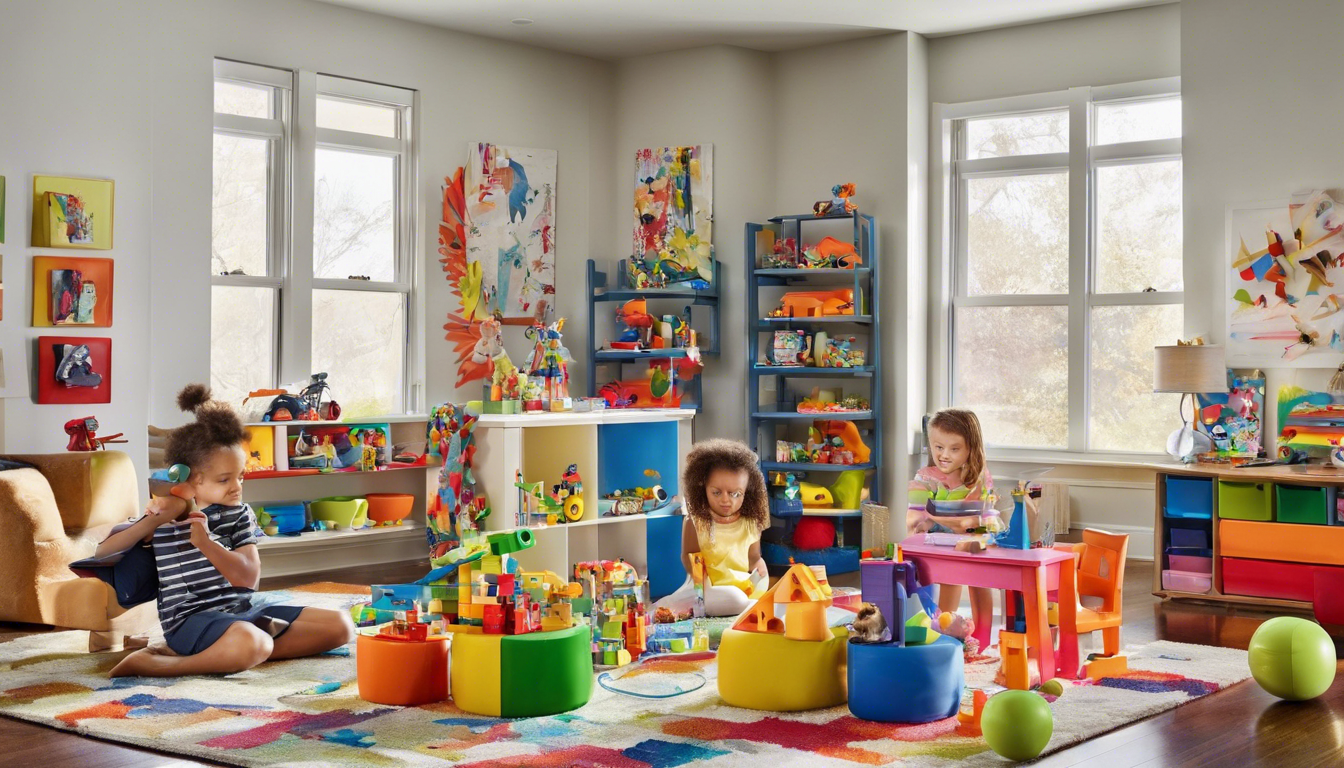In a world overflowing with toys, choosing the right ones for your children can present a significant challenge, especially for homeschooling families who balance learning with play.
The key lies in mindful toy selection—an approach that fosters creativity while ensuring your home remains clutter-free.
This article delves into effective strategies for selecting children’s toys that not only stimulate imaginative play but also enhance learning, all while maintaining an organized and calm environment.
Parents can create spaces that support child development without the chaos that often accompanies a plethora of toys.
Let’s explore how to achieve this balance and cultivate a nurturing atmosphere for your children.
Key Takeaways
- Choosing toys mindfully can enhance children’s creativity while reducing clutter in the home.
- Understanding the specific developmental needs of children at different ages is crucial for effective toy selection.
- Embracing a minimalist approach prioritizes experiences over possessions, creating a healthier living space for families.
Creating a Calm and Inspired Environment
# Creating a Calm and Inspired Environment: Selecting Toys that Foster Creativity and Learning
In today’s fast-paced world, families—especially those who homeschool—often grapple with the challenge of maintaining a calm and inspiring home environment.
The abundance of toys can quickly transform a play area into a chaotic mess, making it crucial to choose children’s toys that not only spark creativity and assist in learning but also minimize clutter.
Here are some strategies that can help in creating a serene space designed for inspiration and growth.
1.
Creating a Calm Space
A harmonious home environment is essential for nurturing a child’s creativity and foster learning opportunities.
It’s paramount to find a balance that allows free play without succumbing to the overwhelm of excessive toys.
A calm space enables children to focus, imagine, and explore their creativity without the distraction and stress often associated with clutter.
Incorporating natural elements, soft colors, and designated areas for play can help facilitate this serene atmosphere.
2.
Understanding Developmental Needs
Children of different ages possess unique developmental needs and interests, and recognizing these differences is crucial when selecting toys.
For instance, preschoolers thrive on imaginative play while older children may prefer more complex, skill-building items.
Tailoring toy choices to align with their developmental stages ensures that children remain engaged and challenged, which is vital for their growth and learning.
3.
Embracing Minimalism
Many parents find themselves overwhelmed by the number of toys their children have.
Embracing a minimalist approach can lead to a healthier living environment.
By focusing on valuing experiences and relationships over material possessions, parents can eradicate unnecessary clutter while fostering a deeper connection with their children.
This shift in mindset encourages intentional selection of toys that truly enrich children’s lives.
4.
Practical Principles
Regularly evaluating toys can help families manage clutter effectively.
Implementing practical steps, such as establishing a ‘one in, one out’ rule, can assist in maintaining a manageable collection of toys.
Encourage children to participate in this process by discussing which toys they cherish and which they might be ready to part with.
This not only reduces clutter but also teaches valuable decision-making skills.
5.
Time Over Money
As the timeless advice from ‘Dear Abby’ resonates—’the best gift you can give your children is your time’—the focus should not solely be on purchasing toys.
Instead, investing quality time with children through play, exploration, and conversation yields far more significant developmental benefits.
This approach nurtures the parent-child bond while also promoting an enriching learning environment.
In conclusion, the journey to creating a calm and inspired space for children is one that requires mindfulness and intention.
By thoughtfully selecting toys, understanding developmental needs, reducing clutter, and valuing experiences over material goods, parents can cultivate a home environment that not only supports creativity and learning but also fosters happiness and well-being.
Understanding Developmental Needs and Embracing Minimalism
A central tenet of mindful parenting revolves around the understanding that less can indeed be more, especially in the context of children’s play.
Rather than overwhelming them with an abundance of toys, it is beneficial to focus on quality over quantity.
Selecting versatile toys that encourage open-ended play can spark imagination and foster creative skills.
For instance, blocks, art supplies, and storytelling games allow for various ways to engage, adapting to the evolving interests and developmental stages of children.
Additionally, rotating available toys can breathe new life into play, presenting familiar items as fresh challenges while keeping clutter to a minimum.
This strategic approach not only caters to children’s developmental needs but also cultivates a sustainable home atmosphere where learning flourishes.




